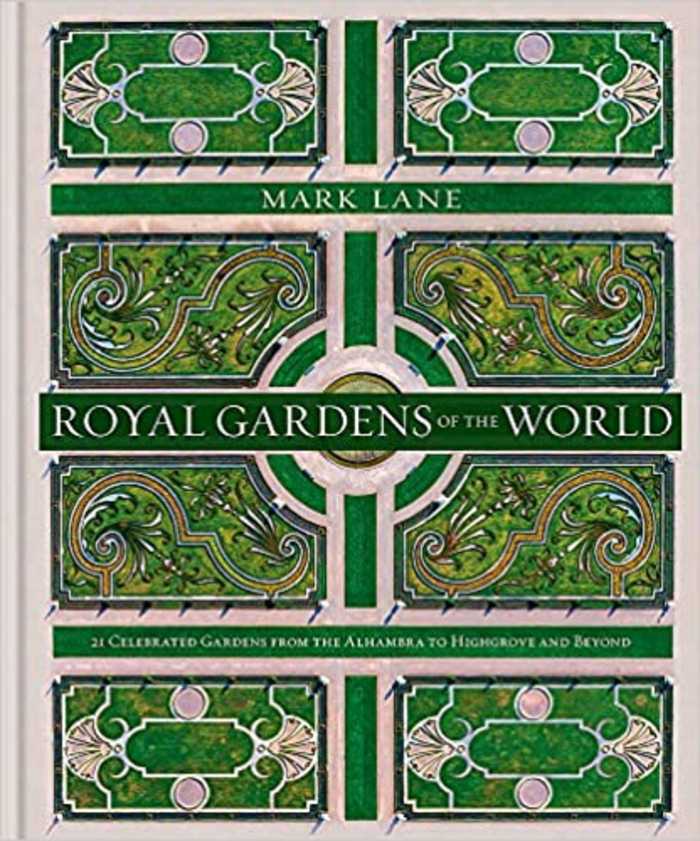Have a seat with...
Mark Lane
TV & Radio Broadcaster, Voiceover, Writer and Garden Designer, Mark is creative with a unique perspective on life, landscape design, gardening, art history and disability.
Thank you for taking the time to chat to us, as a landscape designer, author and TV presenter would we be right in thinking your schedule can get a bit hectic?
My schedule is rather hectic, but I love every minute of it. Each day is different, and although my garden design practice takes up c. 70% of my time, when the TV work, charity work and writing come along it can be a bit of a juggling act, but it seems to work. Fortunately, most of my presenting work takes place during the summer when most of my garden design work is being built, and then when TV work comes to a close at the end of October, I focus on designing and writing. That being said, this year with lockdown, I have spent more time in my own garden and writing, which I have loved tremendously.
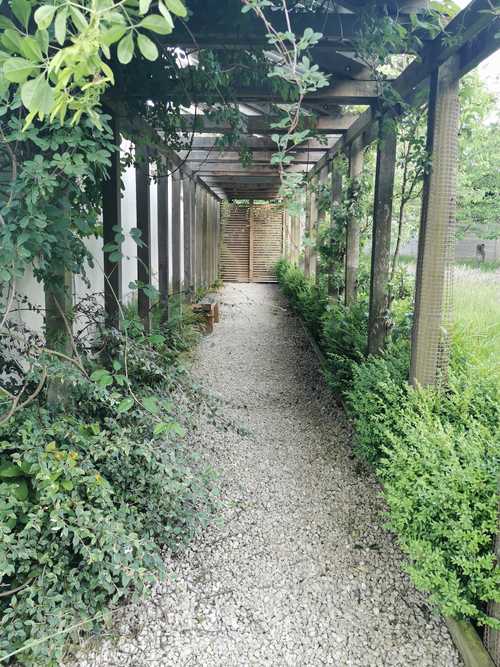
When you’ve had a stressful or busy day, how do you take a moment to relax and unwind?
I have to say that I don’t really have many stressful days. I have busy days, but I love being busy. However, it’s simple. I go outside. As soon as I do, my breathing slows down, my shoulders drop and my mind seems to wander, while at the same time enjoying the scent on the wind or the colours in front of me. My garden and gardening are my ‘green pill’, as I call it. Of course, every time I do go outside, I always see something that needs to be done, but that’s the nature of gardening.
Things have been very different since March, are you finding you have more time to spend on your own garden?
Absolutely. I don’t think I have ever spent so much time in my garden and especially my greenhouse. Normally, I don’t have the time to sow and nurture vegetable seeds, but I have really enjoyed it this year. We have grown cut-and-come-again lettuces, spring onions, beetroot, carrots, chillies and peppers. We always grow soft fruit, in particular strawberries, raspberries, blueberries, apricots, peaches, plums and cherries. We also have a mini orchard and the apples and pears have been great this year. In the herbaceous borders I spent a lot of time in them (on my bottom, shuffling along (which is how I do a lot of my gardening – up close and personal)) at the beginning of lockdown weeding, staking, and putting in plant supports. It has been super re-connecting with the garden and with nature again on a very personal level.
My garden and gardening are my ‘green pill’, as I call it.
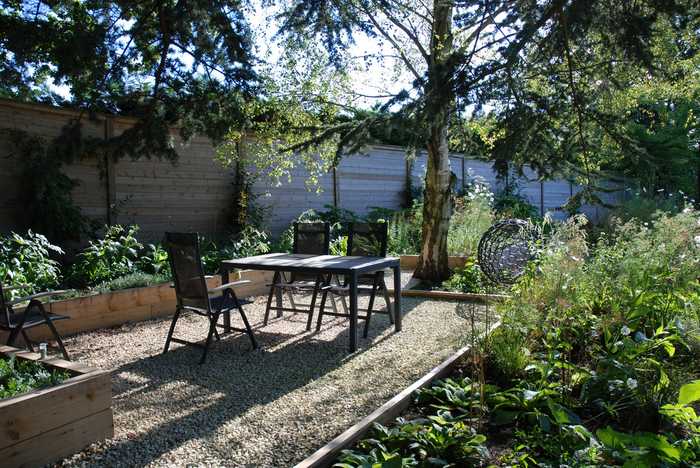
What is your favourite location to sit within your own garden and take a break? Can you describe your surroundings?
There are a couple of spots. I designed a green oak pergola to carry photovoltaic panels, as we generate a lot of our own electricity, and along the sunny side are espaliered peaches, apricots and pears. Along the shady side is a row of evergreen ferns. It’s a sheltered, cool spot that overlooks the lawn and orchard. The other spot is within the white borders. Our property sits in the middle of the plot and the white borders are at the front. In an evening it’s the perfect spot to sit under a silver birch tree, looking across the front garden, which includes the white borders, a blue and yellow border, a prairie border, a grass border, and a rose, peony and hydrangea border. From the white borders we look out across the garden towards the setting sun. In late summer when the sun is a little lower, the ornamental grasses catch the light, which seem to flicker on the slightest breeze.
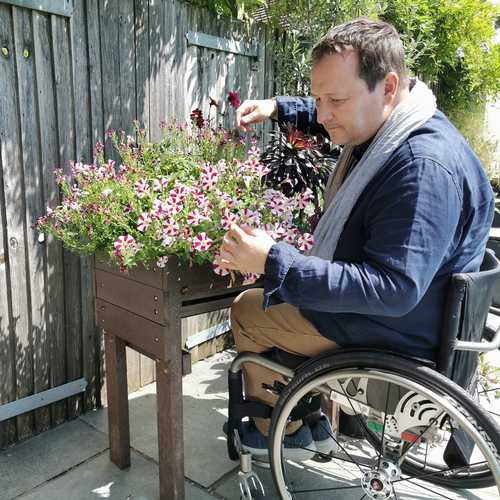
We’re intrigued – how, and when, did you first discover you had such a love for gardens and gardening?
I was about 5 or 6 years of age. My grandparents had large gardens and we would spend every weekend and summer holidays with them. I used to follow my paternal grandfather around the garden, especially his veggie patch, with a small blue truck that carried a ball of string, a blunt pair of scissors and packets of seeds. My grandfather taught me how to tie in climbers, how to deadhead, how to sow seeds, but more importantly how to care for the soil. My grandmother was a flower arranger and she taught me about colour, texture, shape and form and how to put flowers together. My earliest memory is of me lying in the middle of their lawn, looking up at the shapes in the clouds, on a very hot summer’s day, feeling the grass between my fingers and smelling the roses on the air. My maternal grandparents had a garden full of roses, and my brother and I had to pick up the fallen leaves, deadhead the blooms and look out for aphids and black spot. I used to love squishing the aphids between my fingers (I leave nature, such as ladybirds and ants, to devour them now).
My earliest memory is ... looking up at the shapes in the clouds, on a very hot summer’s day, feeling the grass between my fingers and smelling the roses on the air.
So, tell us briefly about your new book “Royal Gardens of The World” who’s it for and why should they read it?
It is a sumptuous look at 21 of the most iconic royal gardens around the world. It’s not a collection of 21 of the best, but rather those gardens which I believe have had the biggest impact on garden design, garden history, gardens and gardening in general. It is beautifully illustrated and covers UK, Europe, Russia, Japan and Bali.
Sounds great! There must have been some royal gardens that narrowly made the cut for the 21 in the book… what was your personal favourite royal garden that didn’t make it to the final book?
Castille Bratislava in Slovakia with stunning Baroque gardens. It looks modern with its limited colour palette, but the site has a rich history dating back as far as 450 BC.
You’ve talked in your book about the importance of your gardens being open for the public to visit, with your global knowledge how does England compare to the rest of the world when it comes to publicly accessible gardens?
This is a good question. There is a long way to go across the world to make ‘public’ gardens fully accessible to all. I would say, however, that the Scandinavian countries and Germany far exceed expectations and practical solutions to ensure that their gardens can be enjoyed by everyone. There is a difficult balance that conservators, restorers, government departments, organisations and head gardeners need to address to safeguard foot fall, ie visitors, while at the same time keeping the gardens historically accurate, yet at the same time moving with modern life. England has made great strides forward, but I believe charities, organisations or individuals who own or care for such public gardens need to consult with disabled people on a more regular basis. We all experience a garden in different ways, and while of course the aim is to make them accessible to all, many do not succeed.
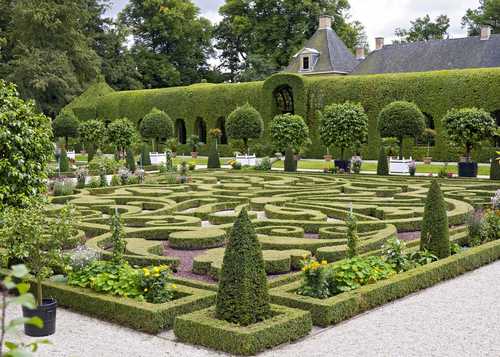
You talk about gardening as an art form, which is very much the way we feel about woodwork. Are there any particular pergolas that stand out for you across the gardens you’ve visited?
The berceau or arbour walkway at Het Loo of c. 1686 really stands out. It frames the Queen’s garden and was originally planted with Dutch Elm on either side. As they grew the canopies fused across the roof, resulting in a green tunnel. Openings give you glimpses of the formal garden.
The Queen Mary’s Bower which runs the length of the Privy Garden at Hampton Court is a beautiful private and secluded part of the garden. One of the most spectacular features of the Privy Garden is the restored entrance to the Bower of lattice grey-painted iron adorned with gold leaf.
The rose pergola in the walled garden at Highgrove, very much in the Lutyens style is a calming and restful spot.
The arch-topped pergolas in the Rose Garden at La Venaria Reale are smothered in climbing roses and stands c. 10m at its highest point.
We’ve already asked about your own garden – but of all the public gardens you’ve visited, which one has your favourite place to sit and watch the world go by? Can you tell us a bit about it?
It’s very difficult to pick one, but I fell in love with the gardens at Fontainebleau Palace. There’s huge restoration work undergoing to bring the palace and gardens back to their original beauty and elegance, but I think I love it so much because it is a little tired in places. The Grand Parterre du Tibre, which is shown on the title pages of the book really offers a great view of the sprawling palace, but it also shows how simplicity of design, with the perfect use of geometry can create a relaxing, atmospheric space, where water plays a central role.
On a very hot summer’s day, the slightest of breeze catches the cooler waters’ surface, lowering the temperature around you. Wooden arbours with benches dotted around this space provide the perfect spot to watch the world go by, and imagining all of the historical characters parading by, in particular Francis I, Henry IV, Louis XIV and Napoleon Bonaparte.
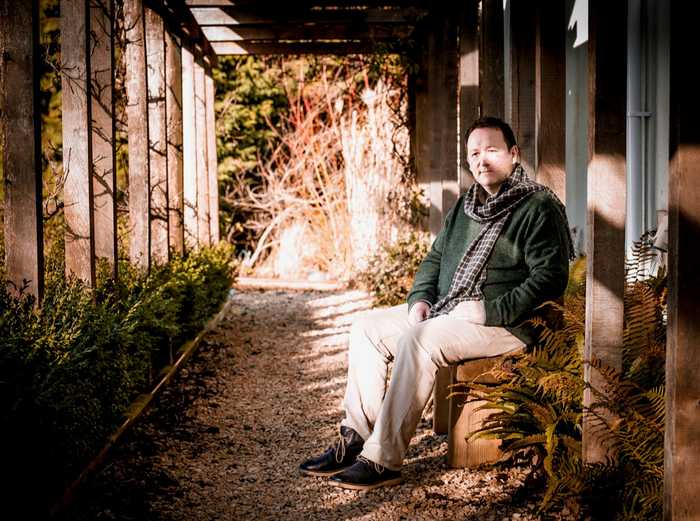
Our thanks to Mark Lane for taking the time to have a seat with us. You can find out more about Mark through his Garden Design website here: www.marklanedesigns.com and his TV & Radio Broadcasting website here: www.marklane.tv
Buy your copy of Royal Gardens of the World by Mark Lane
The Sitting Spiritually 'Have a Seat With' series takes a look behind the scenes at how we switch off from the bustling modern-day lifestyle. We speak to people of all sorts of backgrounds and lifestyles around the country as we seek to explore the different ways of relaxing and just taking a moment.
Posted on October 14th 2020

